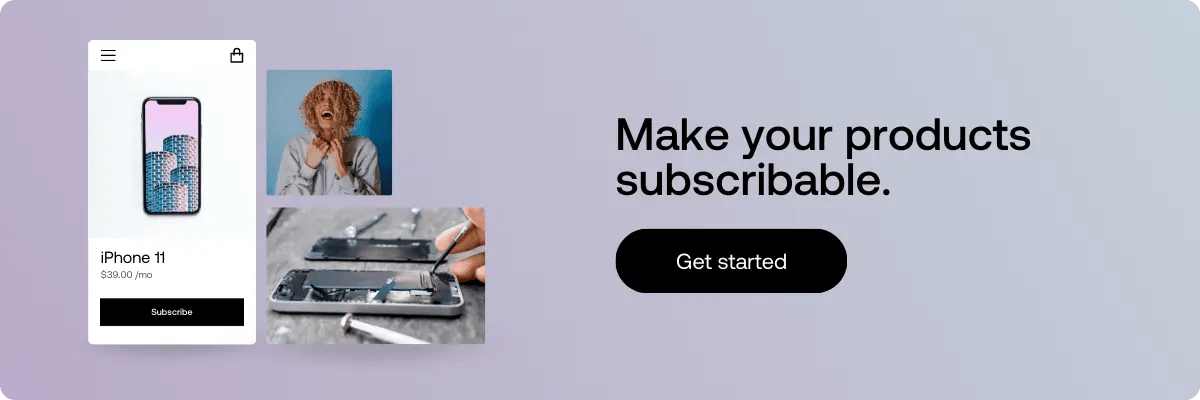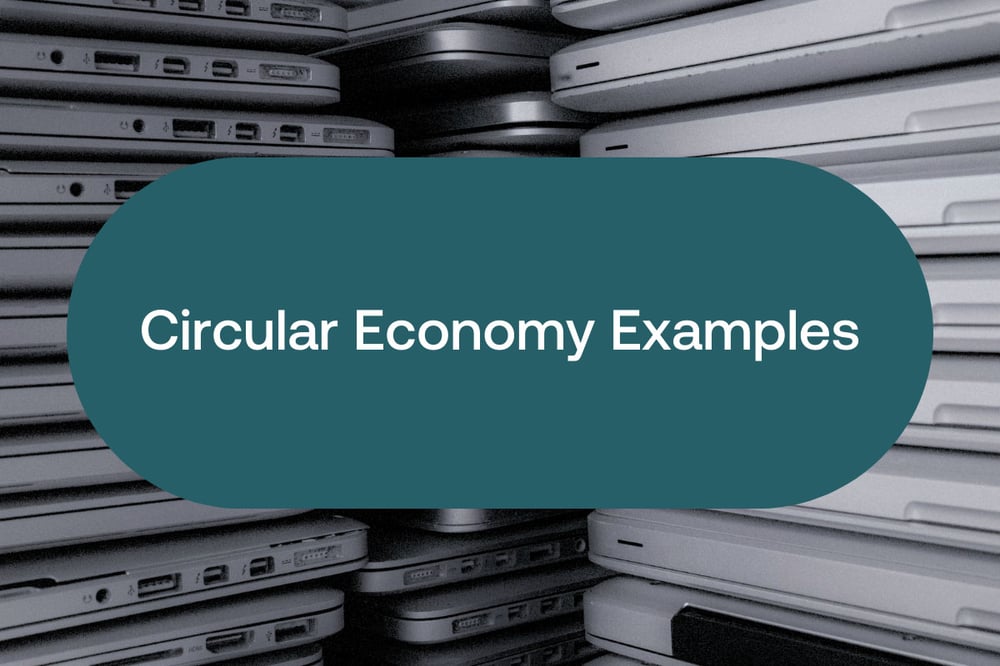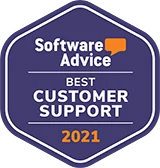The global economy has traditionally operated on a linear model based on a "take-make-waste" approach. However, growing concerns about resource scarcity, climate change, and other environmental and economic factors drive a shift toward a circular economy. This article will explore the reasons behind this transition and the opportunities it presents through systems thinking lens.
We're reaching environmental limits
Systems thinking helps us understand the interconnectedness of resource scarcity, climate change, and environmental degradation as components of a larger global system. With the world population projected to reach 9.7 billion by 2050 (United Nations, 2019), there is increasing pressure on our planet and nature's limited resources. A World Wildlife Fund (WWF) study reported that humanity currently uses 1.6 times the Earth's biocapacity (World Wildlife Fund, 2022). This overconsumption has led to the depletion of non-renewable resources like fossil fuels and minerals and increased pressure on renewable resources like forests and water sources.
Climate change, which has further exacerbated the situation by causing more frequent and severe natural disasters, loss of biodiversity, pollution, and other environmental challenges, is another significant factor driving the shift toward a circular economy. The Intergovernmental Panel on Climate Change (IPCC) warns that if global temperatures rise by more than 1.5°C above pre-industrial levels, the consequences will be dire for ecosystems, economies, and societies worldwide (IPCC, 2018).
The linear economy and consumption model is a major contributor to greenhouse gas emissions, a primary driver of climate change. Thus, there is an urgent need for a more sustainable and resource-efficient approach, which is where circular systems come into play.
Regulators are exacerbating change
Governments and international organizations recognize the need for a circular economy and are designing and implementing policies to accelerate this transition. The Circular Economy Action Plan in the European Union sets ambitious goals, such as halving municipal waste by 2030 and ensuring all packaging is reusable or recyclable by 2030 (European Commission, 2020). In the United States, the Environmental Protection Agency (EPA) has launched initiatives like the Sustainable Materials Management Program, which aims to reduce waste and promote resource conservation (U.S. Environmental Protection Agency, n.d.).
The EU Taxonomy is another powerful regulatory tool to facilitate the transition to a green economy. It provides a classification system for economic activities contributing to environmental sustainability, helping investors and businesses identify environmentally friendly projects (European Commission, 2020).
Alongside the taxonomy, increasingly stringent reporting requirements are being introduced. These reporting standards are the first step in the process of distinguishing green businesses from non-green ones, and eventually, financing incentives will be skewed to favor environmentally sustainable ventures.
Consumers are looking for circular alternatives
Consumer awareness and demand for environmentally friendly products and services are on the rise. A 2020 study by IBM found that nearly 6 in 10 consumers surveyed in the United States and Europe were willing to change their shopping habits to reduce their environmental impact (IBM, 2020). This shift in consumer behavior is driving companies to adopt circular models to meet their customers' expectations for sustainable and responsible practices.
One example of this consumer-driven change can be seen in the growth of the electric vehicle (EV) market. In the European Union, EV sales surged in 2020, with a 137% increase in registrations compared to 2019 (European Environment Agency, 2021). In the United States, a 2021 survey by Consumer Reports found that 71% of U.S. drivers were interested in purchasing an EV as their next vehicle (Consumer Reports, 2021). These trends demonstrate the growing consumer demand for more sustainable alternatives.
Another example is the increasing popularity of zero-waste and plastic-free stores. These retailers offer package-free products to promote circular practices and encourage customers to eliminate waste by bringing their reusable containers. The trend has spread across Europe and the United States, further highlighting the importance of the consumer shift towards circularity.
Technological advancements are making it possible
One of the root causes of the slow circular economy adaption is that the prevailing commerce infrastructure has been designed for the linear economy. Although companies have the interest and willingness to implement circular practices, it has simply been too complex to find profitable ways to serve the market outside of the traditional linear sales model.
Moving from linear to circular systems requires changes throughout elements of the value chain, including supply chain, product design, business models, product use phase, and end-of-life, which is easier said than done.
Emerging technologies, such as the Internet of Things (IoT), big data, and artificial intelligence (AI), enable more efficient and effective circular systems. IoT devices can improve tracking and communication throughout supply chains, optimizing resource usage and minimizing waste. For example, smart sensors can monitor and report real-time data points on energy consumption, enabling more efficient energy management and conservation. (Bibri, S. E., & Krogstie, J, 2017)
Artificial intelligence and machine learning tools can also play a crucial role in advancing circular systems by analyzing vast amounts of data to identify patterns and opportunities for optimization. For instance, AI can help predict equipment failures and optimize maintenance schedules, reducing resource consumption and prolonging product lifespans. (Allwood, J. M., 2014)
Biotechnology and other material advancements are other promising area of development that can support circular systems. Through processes such as bio-based production and biodegradation, biotechnology can contribute to a more sustainable and circular economy. For example, bio-based plastics made from renewable resources, such as starch or cellulose, can be biodegraded or composted, reducing the environmental impact of plastic waste (European Bioplastics, n.d.). Moreover, biotechnology can be employed to develop enzymes that break down plastic waste more efficiently, facilitating recycling and reducing the need for new raw materials (Wei, R., & Zimmermann, W., 2017).
The operationalization of achieving all this requires the evolution of commerce platforms in a direction that supports extended producer responsibility (EPR).
The change creates a huge business opportunity
Companies can save costs by adopting circular systems. Circular systems lead to more efficient raw material usage, better capabilities to recycle waste, and extended product lifecycles. A report by the Ellen MacArthur Foundation and McKinsey & Company estimates that transitioning to a circular economy could generate annual cost savings of up to $1 trillion by 2025 for businesses globally (Ellen MacArthur Foundation, & McKinsey & Company, 2012).
New business models, such as product-as-a-service, sharing-based consumption, and recommerce models, can generate additional revenue streams for manufacturers and retailers. For example, Philips, a global technology company, offers lighting-as-a-service, allowing customers to pay for the light they use instead of purchasing the light fixtures outright (Philips Lighting, n.d.). This model incentivizes Philips to design durable, energy-efficient, and easy-to-maintain products supporting circular principles.
Other benefits of embracing circular business models include increased customer loyalty, competitive advantage, and long-term financial success. Companies that adopt sustainable practices can enhance their brand reputation, appealing to environmentally conscious consumers. For instance, Patagonia, an outdoor clothing and gear company, has gained a loyal customer base by promoting its commitment to sustainability, repair, and recycling programs (Patagonia, n.d.).
By investing in circular practices, businesses can secure a competitive edge and achieve long-term success in an increasingly resource-constrained world.
Conclusion
The shift from linear to circular systems is a response to our time's pressing environmental, economic, and social issues. As regulators, consumers, and technology continue to drive this change, businesses have a unique opportunity to capitalize on the benefits and opportunities offered by circular systems.
Ultimately, embracing circularity will not only benefit individual companies but also contribute to a more sustainable and resilient global economy. By understanding and proactively adapting to these emerging trends, businesses can secure a competitive edge, enhance customer loyalty, and achieve long-term success in an increasingly resource-constrained world.
Sources
Allwood, J. M. (2014). Squaring the Circular Economy: The Role of Recycling within a Hierarchy of Material Management Strategies. In Handbook of Recycling (pp. 445-477). Elsevier. https://www.sciencedirect.com/science/article/pii/B9780123964595000301
Bibri, S. E., & Krogstie, J. (2017). Smart sustainable cities of the future: An extensive interdisciplinary literature review. Sustainable Cities and Society, 31, 183-212. https://doi.org/10.1016/j.scs.2017.02.016
Consumer Reports. (2021). Consumer Reports Survey: American Interest in Electric Vehicles Grows. https://www.consumerreports.org/media-room/press-releases/2022/07/more-americans-would-definitely-get-electric-vehicles-consumer/
Ellen MacArthur Foundation, & McKinsey & Company. (2012). Towards the Circular Economy: Economic and Business Rationale for an Accelerated Transition. https://www.ellenmacarthurfoundation.org/assets/downloads/publications/Ellen-MacArthur-Foundation-Towards-the-Circular-Economy-vol.1.pdf
European Bioplastics. (n.d.). What are bioplastics? https://www.european-bioplastics.org/bioplastics/
European Commission. (2020). A new Circular Economy Action Plan. https://ec.europa.eu/environment/circular-economy/
European Commission. (2020). EU Taxonomy for sustainable activities. https://ec.europa.eu/info/business-economy-euro/banking-and-finance/sustainable-finance/eu-taxonomy-sustainable-activities_en
European Environment Agency. (2021). Electric vehicles: a key driver of Europe’s green transition. https://www.eea.europa.eu/publications/electric-vehicles-from-life-cycle
IBM. (2020). IBM 2020 Consumer Report: Sustainability Matters. https://www.ibm.com/downloads/cas/EXK4XKX8
Intergovernmental Panel on Climate Change. (2018). Global Warming of 1.5°C. https://www.ipcc.ch/sr15/
Ellen MacArthur Foundation, & McKinsey & Company. (2012). Towards the Circular Economy: Economic and Business Rationale for an Accelerated Transition. https://www.ellenmacarthurfoundation.org/assets/downloads/publications/Ellen-MacArthur-Foundation-Towards-the-Circular-Economy-vol.1.pdf
Patagonia. (n.d.). Our Core Values. https://www.patagonia.com/core-values/
Philips Lighting. (n.d.). Circular Lighting. https://www.lighting.philips.com/main/products/lighting-for-circularity
United Nations. (2019). World Population Prospects 2019: Highlights. https://population.un.org/wpp/Publications/Files/WPP2019_Highlights.pdf
U.S. Environmental Protection Agency. (n.d.). Sustainable Materials Management. https://www.epa.gov/smm
Wei, R., & Zimmermann, W. (2017). Microbial enzymes for the recycling of recalcitrant petroleum-based plastics: how far are we? Microbial Biotechnology, 10(6), 1308-1322. https://doi.org/10.1111/1751-7915.12487
World Wildlife Fund. (2022). Living Planet Report 2022. https://wwflpr.awsassets.panda.org/downloads/lpr_2022_full_report.pdf










